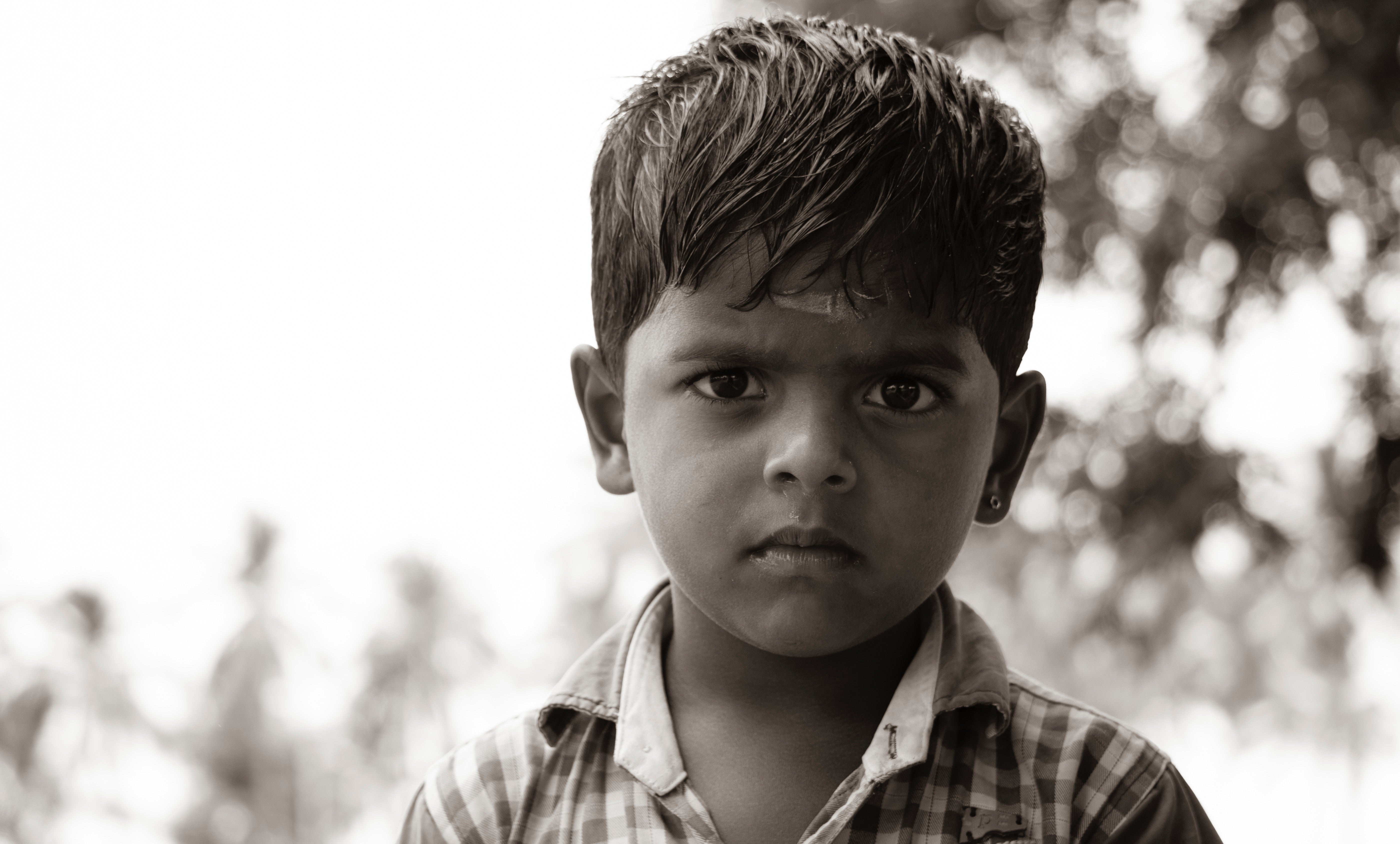by Toni Haas-Williams
Five senses aren’t enough in India, and our sixth one lacks the corporeality to connect incessant motion and color, fresh air and dirty, jungle green and garbage, and all of it is keyed and timed with an ever—always binary hum made by the people’s rhythms—steps, murmurs, and breaths. As our host told us, “It’s not another country or even continent. It’s another planet.”
Maybe I’d seen enough travel shows and screenshots to form loose impressions of downtown Kolkata. I expected sarees and gentle politeness… both were there in spades plus layers of things I didn’t understand, couldn’t, and never will.
The factory, where our bags are made, was a lovely surprise. Table after table of native artisans, their hands working the material and tools artfully because nothing was mechanized. These backpacks soon-coming-by-ship were cut and assembled manually—the term handmade took on new meaning. They had no smiles for us, only wide-eyed, poker-faced curiosity, unless we paused to thank them which brought them to their feet, bowing, palms pressed in the gesture of gratitude. I was instantly humbled—I should be bowing to them, craftsmen who understand more of the real world than I ever will.
All of this was amazing and enough to justify the 25 hours of flying. But then we drove to the Sundarbans…
Our new friend’s car became that final frontier spaceship James T. Kirk loved to fly, and the roads gave new meaning to trans-versing star systems... every kilometer of the stomach-churning sally was dodgy in the best sense of the word. Tropic bush and roadside shop-shacks flashed by in recurring succession. The dogs, who all slept in the road, somehow escaped our wheels time and again, and, for more than three hours, we rocketed on, stopping only for tea in mud cups until we passed over the wood bridge and onto the land of the Prameya Foundation, at the forest buffer of Tridib Nagar, Jharkhali in the Sundarbans—1,500 Dalit people, regrettably tagged by caste system as the untouchables. It is a coastal region at the forefront of climate change, threatened by the rising sea level and cyclones.
I expected anything, everything except what the Prameya compound is—pristine, immaculate. Lovely women in sarees welcomed us with individual bouquets of tropical flowers and scarlet gamcha scarves.

The buildings were traditional—bamboo frames selected to bend with the cyclone winds, mud and straw roofs to weight the structure as they absorb rainwater. We were first ushered into the Prameya Pathshala (school) where 80 Dalit children sat ready, shoulder-to-shoulder. Their English was limited, but they could say their names and ages—3 years to 11. This was virtually a one-room schoolhouse with two teachers, salaries paid by “our” factory owner. They had computers once upon a season, but cyclones and monsoons took their tolls. We handed each child a new-out-of-the-box Oceanbags backpack (our first ever) and shared unspoken certainty that no donation would ever be more satisfying.
Smiles.
Awe. (Ours.)
Of course, they need another classroom. They need computers and a weatherproof room to house them. They need restrooms, one boys’/one girls’, and they needed it all yesterday. So little to ask, yet they didn’t… don’t have them. Not one child had formal education until Prameya made it possible. Yet there they sat, ready… so very ready to embrace the world through understanding.
I’d like to indulge in the splashy side stories: the eighty-eight-year-old grandmother cooking dinner for her family in the yard on hot rocks, the baby goat so tiny I was able to carry it tucked under one arm, the mango trees we ate from, the fresh prawns and crabs that made up our lunch—sustainably grown and fished by the children’s parents.
These make for 20 blogs plus, but the crux is this: We walked the path to the mangrove* nursery where thousands are planted by indigenous women each growing season, and that concluded our witness to the Prameya bubble of mindful genius, a model community for education and skill development, a hub for transitioning dangerous, human vs creature occupations (honey foraging, crab hunting and unsustainable fishing) to a conscious embrace of environmental practices over water and land, education and empowerment over a patch of geography where humans compete with Bengal tigers and global warming to survive… Fast forward: we walked away with a mutual promise to pray—about building an annex to the school, about buying land to plant mangrove trees (adding to Prameya’s), about understanding what global love might potentially be.
This is our epiphany: Our wave has washed us to the beach of what has become a network of Partners for Good. Individuals from our pasts and present have stepped in alongside those who appear to be our future. They offer to help for only the privilege of participation.
Oceanbags is a wave of good.
Despite all their missteps and devastation, people are good.
With help, with blessing, with continued momentum and your support, this foundation will bring healing and help to this country—yes! And to others, to this good Earth and to the good end of anyone who cares.
This isn’t about one difference we can make. It’s a fistful!
All that remains is to carry understanding to as many as will listen and see:
Anyone, everyone can collaborate to make this good world—people and place—much better.
*Coastal mangrove forests store more carbon than almost any other forest on Earth—and there’s so much more to know and revere about this tree.
Photo by Deepak kumar on Unsplash


